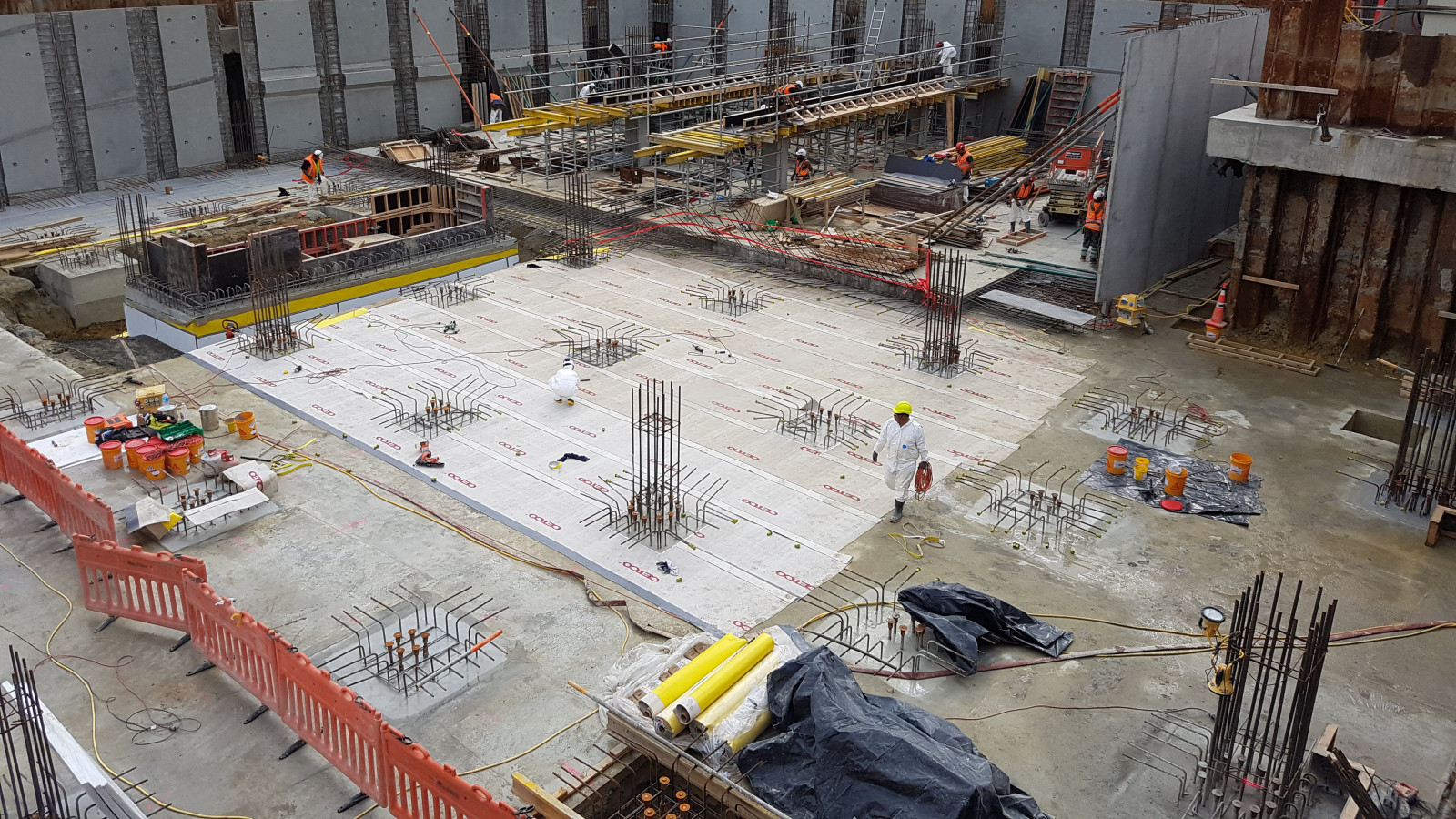Certain bentonite products can provide a vapour retarding function in addition to their normal use for below-grade waterproofing, but this is not always the case.
A ‘vapour barrier’ is defined in the NZBC Handbook as a “sheet material or coating having a low water-vapour transmission and used to minimise water-vapour penetration into buildings.” ASTM International defines a vapour barrier as a “material or construction that impedes the transmission of water vapour under specified conditions” (the term “barrier” is no longer used within ASTM to describe such products). ASTM E1745-17; Standard Specification for Plastic Water Vapour Retarders Used in Contact with Soil or Granular Fill under Concrete Slabs, requires that the vapour barrier exhibit a permeance no greater than 0.3 perms. This specification also lists tensile strength and puncture strength requirements corresponding to three different classes of vapour barriers. The permeance value, however, is the same for all three classes.
Another standard is used to ensure that the vapour barrier retains its performance characteristics across a wide range of field conditions (ASTM D 154, Test Methods for Water Vapour Retarders Used in Contact with Earth under Concrete Slabs, on Walls, or as Ground Cover). This method describes tests that expose the product to heat, cold, cyclical wetting and drying, and soil organisms. Taken together, ASTM E 1745, D 154, and E 96 (discussed below) lay the foundation for evaluating vapour barriers in terms of baseline water vapour transmission and whether certain exposure scenarios affect these baseline values.
Water vapour transmission across a membrane is typically measured in accordance with ASTM E96, Standard Test Methods for Water Vapour Transmission of Materials. This standard describes both the “desiccant method” and the “water method.” The desiccant method involves measuring the weight gain by a dish of desiccant placed over the test membrane; whereas the water method involves measuring the weight loss from a container of water placed under the test membrane. ASTM E 96 allows for testing to be performed at room temperature (Procedures A and B) or at elevated temperatures (Procedures C, D, and E). Most vapour barrier manufacturers use Procedure B, which is the water method at room temperature.
It is important to distinguish between vapour emission quantified via in-situ testing and vapour transmission quantified through laboratory testing. Vapour emission includes vapour released from concrete in addition to vapour moving through a vapour barrier (if present) and the concrete. Vapour transmission includes only the vapour moving through the vapour barrier. The calcium chloride (CaCl) test described in ASTM F 1869 (Standard Test Method for Measuring Moisture Vapour Emission Rate of Concrete Subfloor Using Anhydrous Calcium Chloride) is similar to the desiccant method in ASTM E 96 except that the desiccant is placed on a concrete surface and sealed from external moisture sources. This is the most common vapour emission test, and the flooring industry has relied upon it for many years in order to determine if moisture-sensitive floor systems can be safely installed on new concrete slabs.
Most commercially available vapour barriers are plastic films, ranging from 0.15 – 0.50mm in thickness. In order to meet the NZBC, vapour barriers must have a water flow resistance of less than 90MNs/g as tested in accordance with ASTM E 96. It is also worth noting that plastic membrane vapour barriers and damp-proof membranes (DPM) under concrete floor slab are not necessarily waterproofing membranes and as such do not function for the purpose of waterproofing structures below grade. However, only those waterproofing products containing a plastic membrane could be considered as viable vapour barriers. Special precautions should be taken to ensure that the field seams of these products are taped or otherwise secured to prevent preferential vapour flow.
If you have any questions about waterproofing membranes and ground vapour barriers contact our technical team on [email protected]




























 Most Popular
Most Popular Popular Products
Popular Products


